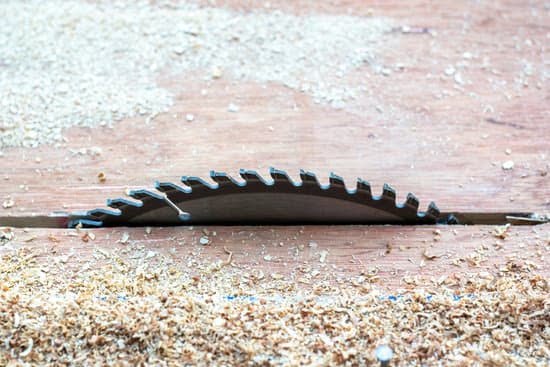Are you wondering how to remove dried latex paint from stained woodwork? The process of removing dried latex paint from stained wood can be a daunting task, but with the right techniques and tools, it is possible to restore the woodwork to its original state. In this article, we will discuss the challenges involved in removing dried latex paint from stained woodwork and provide a step-by-step guide on how to effectively tackle this issue.
There are various methods for removing dried latex paint from stained woodwork, and it’s important to understand the potential risks and complications that may arise during the removal process. From preparing the work area to applying a protective finish, each step plays a crucial role in ensuring that the woodwork is restored without causing any damage. By following our comprehensive guide, you can confidently tackle the task of removing dried latex paint from stained woodwork with ease.
In the following sections, we will delve into the specific steps involved in removing dried latex paint from stained woodwork. From testing an inconspicuous area to scraping off the dried paint using the right tools and techniques, we will cover each aspect of the removal process in detail. Additionally, we will explore different options for using solvents or removers to safely dissolve the paint and provide tips for preventing future mishaps.
Preparing the Work Area
When it comes to removing dried latex paint from stained woodwork, preparation is key to ensuring a successful and safe removal process. Before diving into the actual removal of the paint, it’s important to gather all the necessary materials and take measures to protect the surrounding area.
First and foremost, gather the materials needed for the paint removal process. This may include a putty knife or scraper for gently removing the dried paint, as well as a soft cloth or sponge for cleaning. Additionally, consider using a solvent or paint remover specifically designed for latex paint removal. It’s crucial to read and follow the instructions on these products carefully to ensure safe and effective use.
In addition to gathering materials, it’s essential to protect the surroundings during the paint removal process. Lay down a drop cloth or old sheets to protect the floor underneath the woodwork. This will prevent any potential damage or staining from the paint removal process. It’s also wise to cover nearby furniture and surfaces with plastic or additional protective covering to avoid any accidental splatters or spills.
By taking the time to prepare your work area properly, you can set yourself up for a smoother and more successful experience when removing dried latex paint from stained woodwork. Taking these precautions will not only make the process easier but also help prevent any unnecessary damage to your surroundings.
Testing an Inconspicuous Area
Before diving into the process of removing dried latex paint from stained woodwork, it is crucial to test an inconspicuous area. This step is essential to ensure that the removal process will not cause any adverse reactions or damage to the woodwork. By testing a small, hidden area, you can get a clear understanding of how the wood will react to the chosen removal method.
To begin, select a spot on the woodwork that is not easily visible and apply a small amount of the chosen solvent or remover. Allow it to sit for a few minutes and then gently wipe away any residue. Check for any discoloration, warping, or other changes in the wood’s appearance or texture. If there are no adverse reactions, you can proceed with confidence in removing the dried latex paint from the rest of the stained woodwork.
This precautionary step may seem time-consuming, but it is a crucial part of the process when dealing with delicate surfaces like stained woodwork. By taking this extra measure, you can avoid potential damage and ensure that your efforts to remove dried latex paint will result in a beautifully restored finish without causing further harm.
Scrape Off the Dried Paint
Scraping off dried latex paint from stained woodwork can be a daunting task, but with the right tools and techniques, it is possible to achieve successful removal without causing damage to the wood. Here are some steps to follow when scraping off dried paint:
- Evaluate the condition of the paint: Before starting the scraping process, assess the condition of the dried latex paint. If it is thick and heavily layered, consider using a heat gun or chemical solvent to soften it before attempting to scrape it off.
- Use a plastic putty knife: Opt for a plastic putty knife instead of a metal one to avoid scratching or gouging the wood surface. Gently slide the putty knife beneath the dried paint and lift it away from the woodwork.
- Work in small sections: Instead of trying to scrape off large areas at once, focus on working in small sections. This allows for more control and prevents accidental damage to the stained wood.
In addition to these steps, it’s crucial to proceed with caution and patience when scraping off dried latex paint from stained woodwork. Rushing through this process can result in unnecessary damage that may be difficult or costly to repair.
Remember that prevention is key when it comes to avoiding future mishaps with dried paint on stained woodwork. Always use protective coverings such as drop cloths or painter’s tape when working on painting projects near stained wood surfaces, and clean up any spills immediately to prevent them from drying and causing further damage.
Using Solvents or Remover
When it comes to removing dried latex paint from stained woodwork, using solvents or removers can be an effective solution. However, it’s important to explore different options and understand the safety considerations before proceeding with this method.
Choosing the Right Solvent
Not all solvents are created equal, and it’s crucial to select the right one for removing latex paint from stained woodwork. Mineral spirits, denatured alcohol, acetone, and lacquer thinner are commonly used solvents for this purpose. Each solvent has its own properties and potential risks, so it’s essential to read the labels carefully and choose a solvent that is suitable for use on stained wood surfaces.
Testing the Solvent
Before applying any solvent or remover to the affected area, it’s crucial to conduct a test in an inconspicuous spot on the woodwork. This will help determine if the solvent is compatible with the stain and finish on the wood, as well as whether it causes any discoloration or damage. If there are no adverse reactions after a few minutes, you can proceed with confidence.
Application and Removal
Once a suitable solvent has been chosen and tested, carefully apply it to the dried latex paint using a clean cloth or sponge. Allow the solvent to penetrate the paint for a few minutes before gently scraping off the softened paint with a plastic scraper or putty knife. It may take several applications of solvent and gentle scraping to completely remove all traces of dried latex paint from stained woodwork.
It’s important to exercise caution when using solvents or removers, as they can be flammable and produce strong fumes. Always work in a well-ventilated area, wear protective gloves and goggles, and follow the manufacturer’s instructions for safe use. By taking these precautions and selecting the appropriate solvent, you can effectively dissolve dried latex paint from stained woodwork without causing damage to the underlying surface.
Cleaning the Area
Removing Residue
After the dried latex paint has been successfully scraped off, there may still be some residue left behind on the stained woodwork. To remove this residue, you can use a solvent or remover specifically designed for latex paint. Apply the solvent to a clean cloth and gently rub it onto the affected area. Be sure to follow the manufacturer’s instructions and test it on a small, inconspicuous area first to ensure it won’t damage the stained woodwork.
Restoring the Finish
Once the residue has been removed, it’s important to restore the original finish of the stained woodwork. Depending on the type of stain or sealant originally used, this may involve applying a fresh coat of stain or sealant to the affected area. Make sure to choose a product that matches the existing finish as closely as possible for a seamless result.
Buffing and Polishing
After applying the new coat of stain or sealant, allow it to dry completely according to the manufacturer’s instructions. Once dry, you can lightly buff and polish the area to blend it with the rest of the woodwork. Use a clean, soft cloth and gentle circular motions to achieve a smooth and uniform finish. This step will help ensure that no signs of the previous dried latex paint removal process are visible on your stained woodwork.
By following these steps for cleaning and restoring the affected area of your stained woodwork after removing dried latex paint, you can effectively erase any traces of the mishap and restore its original beauty. Remember to always approach this task with caution and patience in order to achieve optimal results without causing further damage.
Applying a Protective Finish
After successfully removing the dried latex paint from stained woodwork, the next step is to apply a protective finish to enhance the appearance and durability of the wood. This process not only restores the original finish of the woodwork but also protects it from future damage and wear. By adding a fresh coat of stain or sealant, you can ensure that your woodwork looks polished and remains in top condition for years to come.
Before applying any protective finish, it is important to thoroughly clean the area to ensure that no residue from the paint removal process remains. Use a mild detergent and water to clean the surface, followed by a thorough drying period. Once the surface is clean and dry, proceed with applying the protective finish according to the manufacturer’s instructions.
When choosing a stain or sealant, consider factors such as color, sheen, and level of protection needed for your specific type of woodwork. Stains are available in a variety of shades and can be used to enhance the natural beauty of the wood, while sealants provide a protective barrier against moisture and other elements. It is important to select a product that is compatible with both the type of wood and any existing finishes on the woodwork.
After applying the protective finish, allow it to dry completely before using or handling the woodwork. Depending on the type of product used, multiple coats may be necessary to achieve the desired level of protection and aesthetic appeal. Once applied, regularly maintain and reapply stain or sealant as needed to keep your stained woodwork looking its best for years to come.
By carefully selecting and applying a protective finish, you can not only enhance the appearance of your stained woodwork but also ensure its long-term durability and beauty. Taking these steps will help preserve your hard work in removing dried latex paint from stained woodwork, ultimately prolonging its lifespan and maintaining its original charm.
Tips for Preventing Future Mishaps
As the saying goes, “an ounce of prevention is worth a pound of cure,” and this certainly applies to avoiding future mishaps with paint spills and stains on woodwork. Here are some tips to help prevent similar incidents from occurring in the future:
- Use drop cloths or protective coverings: When working with paint, especially in areas near woodwork, it’s essential to use drop cloths or protective coverings to prevent any accidental spills or drips from reaching the stained wood surfaces. This simple step can save you a lot of time and effort in the long run.
- Properly seal paint containers: When not in use, make sure to securely seal paint cans or containers to prevent any accidental tip-overs or leaks that could lead to spills on woodwork. Additionally, storing paint cans on stable surfaces can reduce the risk of them being knocked over.
- Work methodically and cautiously: Whether you’re painting a room or touching up woodwork, it’s important to work methodically and cautiously to minimize the chances of making a mess. Take your time and pay attention to detail when handling paint to avoid any accidents.
By implementing these preventative measures, you can significantly reduce the likelihood of having to deal with dried latex paint on stained woodwork in the future. While accidents may still happen, taking these precautions can go a long way in preserving the beauty and integrity of your wood surfaces.
Remember that knowing how to remove dried latex paint from stained woodwork is valuable knowledge, but preventing it from happening in the first place is even more beneficial.
Conclusion
In conclusion, removing dried latex paint from stained woodwork can be a challenging task, but it is not impossible with the right approach. By preparing the work area, testing an inconspicuous area, carefully scraping off the dried paint, and using solvents or remover as needed, it is possible to restore the woodwork to its original condition. It is important to exercise patience and caution throughout the process to avoid causing any damage to the woodwork.
When removing dried latex paint from stained woodwork, it is crucial to gather all the necessary materials and protect the surrounding areas before beginning the removal process. This includes using appropriate tools for scraping off the paint and wearing protective gear such as gloves and goggles when handling solvents or removers. Additionally, it is essential to carefully test an inconspicuous area for any adverse reactions before proceeding with the removal process to ensure that no further damage occurs.
Ultimately, by following these key steps and exercising patience and caution throughout the process, it is possible to effectively remove dried latex paint from stained woodwork without causing any harm to the underlying surface. By taking these precautions and investing time and effort into restoring the woodwork, it is possible to achieve a successful outcome and maintain the original beauty of the stained woodwork.
Frequently Asked Questions
How Do You Remove Dried Paint From Stained Wood?
To remove dried paint from stained wood, you can start by using a putty knife or scraper to gently scrape off as much of the paint as possible without damaging the wood. Then, use a fine-grit sandpaper to sand off the remaining dried paint.
You can also try using a mixture of warm water and mild dish soap to soften the paint before scraping and sanding.
How Remove Dried Latex Paint From Wood Trim?
If you need to remove dried latex paint from wood trim, you can try using a combination of rubbing alcohol and a soft cloth to gently rub away the dried paint. Another option is to use a commercial latex paint remover, following the manufacturer’s instructions carefully to avoid damaging the wood trim.
It’s important to always test any method on an inconspicuous area first.
What Will Dissolve Dried Latex Paint?
For dissolving dried latex paint, you can use rubbing alcohol or isopropyl alcohol as an effective solvent. Apply it directly on the dried paint and let it sit for a few minutes before gently rubbing or scraping away the dissolved paint.
Additionally, mineral spirits or denatured alcohol can also help dissolve and remove dried latex paint from surfaces like metal, glass, or ceramics. Always be cautious when handling these solvents and work in a well-ventilated area.

Hi everyone! I’m a woodworker and blogger, and this is my woodworking blog. In my blog, I share tips and tricks for woodworkers of all skill levels, as well as project ideas that you can try yourself.





